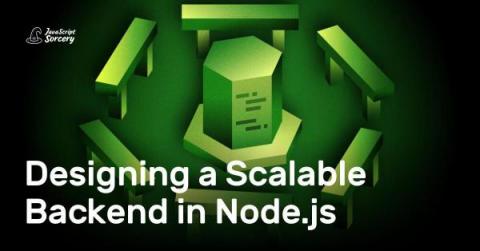Designing a Scalable Backend in Node.js
As a developer supporting a growing business, you’ll likely spend a lot of time thinking about scaling. We live in a wonderful time to be solving scale problems. Computers are so fast and capable that many of the development decisions you make when writing backend systems won’t noticeably impact performance(until your app reaches an absolutely massive scale). If this weren’t the case, we’d all be writing web servers in C.











